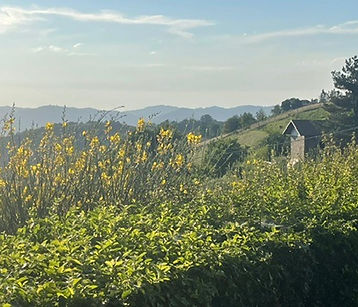
Courses Taught
Tell it Slant: Walt Whitman & Emily Dickinson
Foundational American poets of the middle of the nineteenth-century, Emily
Dickinson and Walt Whitman launched a uniquely American poetic tradition. In
addition to reading their poetry in the context of major literary, cultural, and
historical influences—including Transcendentalist philosophy, the sentimental
poetic tradition, and the Civil War – we will be attempting to answer the following
questions: How are Whitman’s and Dickinson’s very different approaches to
poetry, publication, and the “public” reflective of pervasive tensions within the
nation? How do they each conceptualize the role of the poet in a democratic
society? What are the contradictions that arise when a poet attempts to be a
representative spokesperson for America?

Design and Disorder in American Poetry
This course is designed to provide breadth and depth of reading in American poetics, beginning with foundational poetry by Emily Dickinson and Walt Whitman, among others. Our readings will require some nimbleness on the part of readers; we’ll plunge deeply into some major movements and poets, as well as scan the broad terrain of an ever-changing poetic landscape. We’ll read contrapuntally, placing European-styled “high modernists” (H.D., Pound, Eliot) in dialogue with a Jazz poetics inspired by local, North American traditions that fuse natural and urban flux: William Carlos Williams, Jean Toomer, Langston Hughes, Wallace Stevens, Gertrude Stein, Frank O’Hara, Elizabeth Bishop, Audre Lorde, Gwendolyn Brooks, Jos Charles, Jericho Brown, and Claudia Rankine, among others. We will treat each poet within the context of relevant aesthetic, historical, and social transformations that moved them to write poetry.
%2C_oil_on_canvas%2C_100_3_x_73_6_cm%2C.jpg)
Patronage, Promotion, & Politics:
Modern American Literature, 1920s-1930s
Seeking to deepen our understanding of the cultural embeddedness of American modernism, this course examines the complexities of both individual genius and communal affiliation in producing modern American poetry and fiction. We should view modernism as born not only from aesthetic ferment among poets, painters, and artists, but also from the vexed relationships between writers and their chief patrons and promoters, including the editors of the period’s leading literary and political journals. The period’s prevailing cultural anxieties—expatriatism and double-consciousness, economic turmoil and social protest—will frame our understanding of aesthetic issues. We’ll traverse the U.S. and cross the Atlantic to the prominent European literary hubs as we continue to uncover the dynamic relationships between modernist experimentalism, the literary marketplace, and American politics between 1922 and 1939.

Zora Neale Hurston & William Faulkner
This course explores the role of memory, politics, and race in the life and work of Zora Neale Hurston and William Faulkner. We will consider how the geographic boundaries of Hurston's Eatonville, Florida and Faulkner’s imagined Yoknapatawpha County (Oxford, Mississippi) underscore complex relationships between environment and culture. Portraying two very different conceptions of the "South," Hurston and Faulkner invite us to consider such compelling “Southern Gothic” themes and issues as genealogy and race, economics and social class, and myth and folklore.
_edited.jpg)
The Undead: Ghosts, Vampires, and Zombies
Ghosts, vampires, and zombies have haunted the popular imagination of each and every culture in the form of stories and legends handed down orally or written for posterity. In this seminar we will explore the rich tradition of the ghost story, from its roots in early myth and legend and its heyday in the Victorian era to contemporary re-imaginings of classic tales of haunting. Interdisciplinary and multi-cultural in scope, our readings will include essays written by 19th - century scientists fascinated by the possibilities of spirit survival after death in the post-Darwinian age, together with anthropological investigations of Haitian Voodoo culture. In addition to such foundational nineteenth-century authors as Henry James, you will be reading the works of Zora Neale Hurston, Shirley Jackson, Sylvia Moreno-Garcia and Coleson Whitehead, and others alongside contemporary scientific perspectives of the supernatural.

Spellbound: The Art and Power of Poetry
Take a tour of poetry, beginning with well-known and popular forms such as the English and American ballad, sonnet, epistolary, ghazal, and contemporary free-verse poetry. Learn to recognize and appreciate major poetic forms and discover the power of language to enchant and to inspire. You’ll learn to read and write about poetry; you’ll also learn how to do things with poems, such as the art of metrical scansion. In addition to two essays (3-4 pages) based on the close reading of a poem, a mid-term and a final essay (6-8 pages), you will have creative exploration opportunities, such as writing an “erasure” or a poetry “mash-up.”
_jpg.webp)